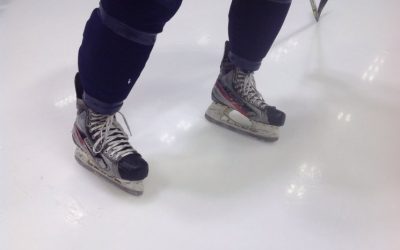How do you train hand-eye coordination?
In a previous article, hand-eye coordination was described as a motor skill essential to good performance in the goalkeeper position. Our understanding of this physical quality now enables us to grasp what will promote its improvement. As coaches often get caught up in the innovation and click-through of their social media, this article aims to provide guidelines for designing goalkeeper-specific exercises that will actually benefit hand-eye coordination.
Firstly, there are different receptors inside the eye: cones and rods. The cones are the most important, as they are located mainly in the middle of the retina and have the greatest detection precision(2). They mainly use shape and color detection to locate objects in space. These receptors are therefore activated differently depending on the color of the objects to be located(4). To ensure transferable training, the shape and color of the object used for practice must resemble as closely as possible that used in a match situation(3).
Another element to consider is the trajectory of the object to be located. The eye transmits information that enables the brain to predict the target to be reached, and to send a motor command for the hand movement. Training hand-eye coordination therefore involves more than simply catching an object: it also involves detecting its trajectory and adapting the motor command in response(5).
Secondly, repeating this process at slow or moderate speed does not create the stimulation needed to create improvement. Progress in performance follows exposure that challenges the goalkeeper. He must therefore be confronted with a speed of movement equal to or faster than what he is used to on the rink, to encourage him to work on his ability to locate and move in relation to the object to be caught(1).
In short, in order to train hand-eye coordination so that goalkeepers can really improve, the exercise must be performed with an object of representative color and shape, the object’s trajectory must be similar to that perceived in the games, and the object’s speed must be equal to or greater than what goalkeepers are normally confronted with.
Training with tennis balls
Tennis balls have long been a popular item with goalkeeping coaches for improving hand-eye coordination. However, in the light of the information presented in this article, this use is highly questionable. Tennis balls are unrepresentative in terms of shape and color, and rarely follow characteristic trajectories. In field hockey, trajectories are mostly upward, which is much more variable with bouncing balls. Speed also varies greatly between puck and tennis ball shots.
What’s more, adaptations are almost impossible when the ball is self-initiated by the goalkeeper (e.g. throwing the ball at a wall in front). When making the throw, the goalkeeper unconsciously knows the trajectory of the object to be caught aura after hitting the wall(1). If he succeeds in thwarting himself on the first attempt, this cannot happen again, because the brain is now aware of this possibility(5).
In conclusion, it is very difficult to create good exercises that will bring about real improvements in hand-eye coordination. Despite the hundreds of innovative videos you’ll see on the Internet, there are very few that are specific enough to reproduce what happens on the ice against an opponent. However, games with tennis balls remain highly relevant to the development of hand-eye coordination as a basic motor foundation in young people, we just need to be more conservative in the virtues we tend to attribute to them.
Written by Léandre Gagné Lemieux, M.Sc. kinesiology
References
1. Abernathy B (1991) Do generalize visual training really work?
2. Goldberg M (2000) The control of gaze. In: Krandel ER, Schwartz T, Jessel M. Principles on neural science, New York, Elsevier, p.782-800.
3. Goodale MA and Milner AD (1992) Separate visual pathways for perception and action. Trends in Neurosciences 15(1):20-25.
4. Paillard J (1996) Fast and slow feeback loops for the visual correction of spacial errors in a pointing task: a reappraisal. Can J Physiol Pharmacol 74(4):401-417.
5. Schmidt RA and Lee TD (2005) Motor control and learning: A behavioral emphasis. Champaign, Human Kinetics.
Want to stay on top of new articles before they’re published?
Subscribe to our newsletter.
Why is it easier to turn left?
Why is it easier to turn left? MAXIME Sports physiotherapist In a field hockey match, various skating techniques are used to counter the opponent. A technique of choice for quickly changing direction while maintaining good speed is the sharp turn. On the one hand,...

